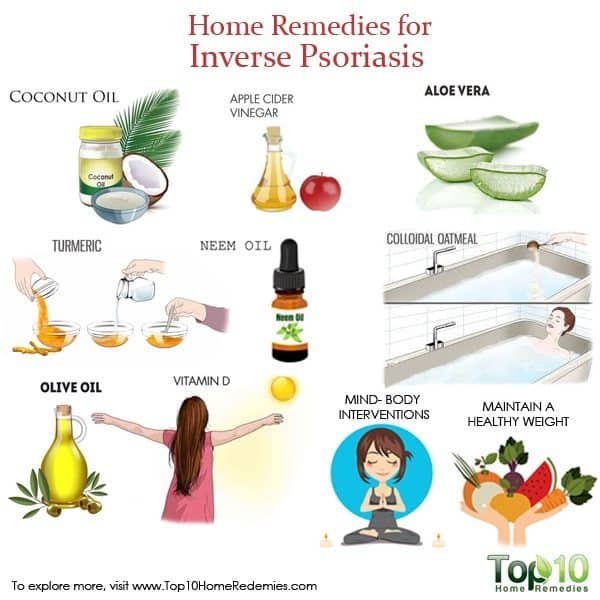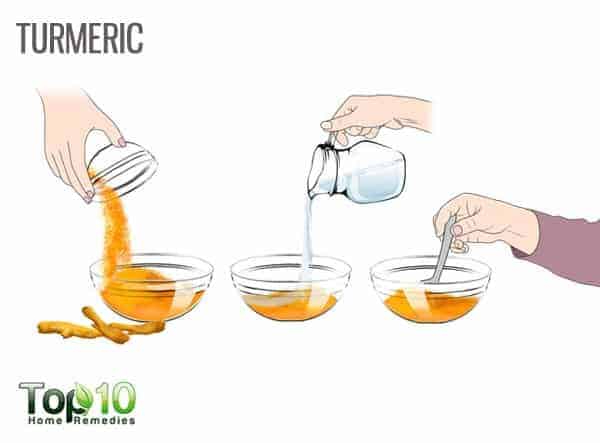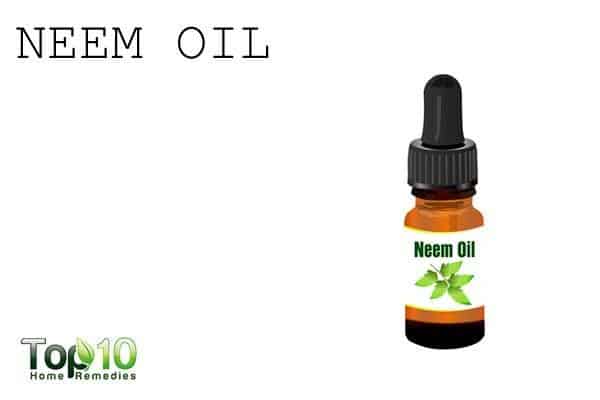When it comes to psoriasis, we often think of scaly skin patches that
itch, crack, get red, feel sore and sometimes bleed. But there is also a
type of psoriasis, known as inverse psoriasis, where lesions are often
shiny and smooth, and found in skin folds.
Inverse psoriasis is also known as flexural psoriasis because skin folds are called flexures.
Like psoriasis, inverse psoriasis is a chronic autoimmune condition that attacks healthy skin cells. While genetics play a role in developing psoriasis, several environmental and other triggers can cause flare-ups.
Such triggers include stress, skin injuries, smoking, certain medications, obesity, excessive sweating and friction on the skin. Any of these factors also can make inverse psoriasis outbreaks worse.

Studies have found that people who are middle-aged or seniors are more likely to develop flexural psoriasis than younger people.
The shiny red rashes are common in skin folds like the armpits, the genitals, the buttocks crease, behind the knees, behind the ears, around the navel and underneath the breasts.
As inverse psoriasis often appears in sensitive and tender skin areas, people may experience a lot of discomfort.
A 2005 study published in the European Journal of Dermatology reports that areas affected by inverse psoriasis often involve the groin, armpits, genitals and navel.
The study also highlights that when compared with common psoriasis, inverse psoriasis has similar and unique characteristics in terms of the affected areas, clinical symptoms and responses to the treatment (1).
The first signs of inverse psoriasis are bright, red patches of skin in body folds that are often painful and accompanied by extreme itching. Also, the affected skin becomes very tender and is further irritated by sweating and skin rubbing against itself.
If not treated timely, an inverse psoriasis lesion can crack open, creating the possibility of bleeding or infection.
While it is true that psoriasis is an incurable condition, you can definitely manage it many different ways and prevent the symptoms from worsening.

Here are the top 10 home remedies for inverse psoriasis.

When it comes to a natural moisturizer, coconut oil is an excellent remedy. Coconut oil can also soften the skin, thereby reducing flaking and scaling.
It also helps restore the skin’s natural pH balance and helps prevent infections.

Apple cider vinegar can be used in multiple ways, including topically and orally.
It provides relief from the symptoms by keeping the affected skin hydrated and well-moisturized. It forms a protective layer on the broken skin and promotes healing. It also helps fight inflammation and boosts the immune system.

A 2012 study published in the Asian Journal of Dermatology found that a mixture of aloe vera and coal tar is an effective topical treatment for psoriasis without noticeable side effects (2).

The yellow herb has anti-inflammatory and antioxidant properties that help reduce the symptoms and provide comfort.

A study published in the Asian Pacific Journal of Tropical Biomedicine in 2013 reports that neem oil has a remarkable effect on chronic skin conditions like psoriasis when high quality, organic neem oil is used (3).
The starches and beta-glucans in it help with water retention and improve protective function. Its antioxidant and anti-inflammatory properties help reduce the itchiness and pain.

A study published in the Journal of Drugs in Dermatology in 2007 reports that colloidal oatmeal works as a cleanser, moisturizer and buffer, as well as a soothing and protective anti-inflammatory agent (4).

Also, the polyphenols present in extra-virgin olive oil are effective in preventing and treating immune disorders.
A 2011 study published in Dermatology Research and Practice reports that vitamin D plays a role in metabolic syndrome and improves psoriatic skin lesions (5).

Another study published in 2017 in Reviews in Endocrine & Metabolic Disorders found that due to its role in proliferation and maturation of keratinocytes, vitamin D has become an important local therapeutic option in the treatment of psoriasis (6).

A 2012 study published in Dermatology Research Practice shows that psoriatic patients reported significantly higher degrees of depression and anxiety than controls. In addition, psoriatic women were more depressed than psoriatic men (7).
To manage stress, incorporate mind-body practices into your daily life. For instance, you can try aromatherapy to reduce stress.
Meditation also helps reduce stress and increases your tolerance for physical and emotional pain caused by psoriasis.

A 2017 study published in the Journal of Psoriasis and Psoriatic Arthritis shows that weight loss through diet, exercise and calorie restriction can reduce the severity of psoriasis (8).
Losing weight can even make psoriasis treatments more effective.
To keep your weight in a healthy range, focus on making little changes to your eating and exercise habits like:
Source Click here
Inverse psoriasis is also known as flexural psoriasis because skin folds are called flexures.
Like psoriasis, inverse psoriasis is a chronic autoimmune condition that attacks healthy skin cells. While genetics play a role in developing psoriasis, several environmental and other triggers can cause flare-ups.
Such triggers include stress, skin injuries, smoking, certain medications, obesity, excessive sweating and friction on the skin. Any of these factors also can make inverse psoriasis outbreaks worse.

Studies have found that people who are middle-aged or seniors are more likely to develop flexural psoriasis than younger people.
The shiny red rashes are common in skin folds like the armpits, the genitals, the buttocks crease, behind the knees, behind the ears, around the navel and underneath the breasts.
As inverse psoriasis often appears in sensitive and tender skin areas, people may experience a lot of discomfort.
A 2005 study published in the European Journal of Dermatology reports that areas affected by inverse psoriasis often involve the groin, armpits, genitals and navel.
The study also highlights that when compared with common psoriasis, inverse psoriasis has similar and unique characteristics in terms of the affected areas, clinical symptoms and responses to the treatment (1).
The first signs of inverse psoriasis are bright, red patches of skin in body folds that are often painful and accompanied by extreme itching. Also, the affected skin becomes very tender and is further irritated by sweating and skin rubbing against itself.
If not treated timely, an inverse psoriasis lesion can crack open, creating the possibility of bleeding or infection.
While it is true that psoriasis is an incurable condition, you can definitely manage it many different ways and prevent the symptoms from worsening.

Here are the top 10 home remedies for inverse psoriasis.
Contents
1. Coconut Oil
The primary goal of topical treatments for inverse psoriasis is to reduce inflammation and discomfort by adding moisture to the affected area.
When it comes to a natural moisturizer, coconut oil is an excellent remedy. Coconut oil can also soften the skin, thereby reducing flaking and scaling.
- Apply some lukewarm coconut oil on the affected area up to 3 times daily.
- Alternatively, mix a small amount of virgin coconut oil and tea tree oil in a ratio of 10:1. Apply this oil mixture on the affected area. Use it in the morning after bathing and at night before going to bed.
- Also, consume about 2 tablespoons of extra-virgin coconut oil daily. You can swallow it as is or mix it into a fruit smoothie.
2. Apple Cider Vinegar
Apple cider vinegar is also very effective at alleviating the itchy feeling and irritation associated with inverse psoriasis.It also helps restore the skin’s natural pH balance and helps prevent infections.

Apple cider vinegar can be used in multiple ways, including topically and orally.
- Add 1 cup of raw, unfiltered apple cider vinegar to a warm bath. Soak in the water for 20 minutes. Pat dry your skin and apply a light moisturizer.
- Another option is to make a solution using 1 part raw, unfiltered apple cider vinegar and 3 parts lukewarm water. Soak a washcloth in the solution, and apply it on the affected area for at least 1 minute. Repeat 2 or 3 times a day.
- Mix 1 teaspoon of raw, unfiltered apple cider vinegar into a glass of water. Drink it twice daily, especially during flare-ups. This remedy is also good for overall health, as it detoxifies the body.
3. Aloe Vera
Aloe vera is another very promising alternative treatment for inverse psoriasis.It provides relief from the symptoms by keeping the affected skin hydrated and well-moisturized. It forms a protective layer on the broken skin and promotes healing. It also helps fight inflammation and boosts the immune system.

A 2012 study published in the Asian Journal of Dermatology found that a mixture of aloe vera and coal tar is an effective topical treatment for psoriasis without noticeable side effects (2).
- Extract the gel from an aloe vera leaf.
- Apply it on the affected area.
- Leave it on until it is completely absorbed by the skin.
- Repeat 3 times daily for several weeks.
4. Turmeric
Turmeric is a wonderful remedy for the treatment of different skin diseases, and inverse psoriasis is not an exception.
The yellow herb has anti-inflammatory and antioxidant properties that help reduce the symptoms and provide comfort.
- Topical use: Make a paste using 1 part turmeric powder and 2 parts water. Apply it on the affected area, cover it with gauze and leave it on overnight. The next morning, remove the gauze and rinse your skin with lukewarm water. Reapply after a couple of hours. Do this daily.
- Oral use: Add 1 teaspoon of ground turmeric to 4 cups of water and bring it to a boil. Reduce the heat and let it simmer for 10 minutes. Strain it and add honey or lemon juice for taste. Drink it twice daily.
5. Neem Oil
Neem oil can also be used to treat inverse psoriasis. Being an emollient, it helps soften and moisturize dry, cracked skin. It helps heal any lesions or scaling, too.
A study published in the Asian Pacific Journal of Tropical Biomedicine in 2013 reports that neem oil has a remarkable effect on chronic skin conditions like psoriasis when high quality, organic neem oil is used (3).
- Mix 10 drops of organic, cold-pressed neem oil into 1 teaspoon of warm coconut oil.
- Apply it gently on the affected area.
- Allow it to sit for 1 hour.
- Rinse it off using lukewarm water.
- Do this once daily.
6. Colloidal Oatmeal
Colloidal oatmeal is very beneficial for skin disorders like psoriasis, including inverse psoriasis.The starches and beta-glucans in it help with water retention and improve protective function. Its antioxidant and anti-inflammatory properties help reduce the itchiness and pain.

A study published in the Journal of Drugs in Dermatology in 2007 reports that colloidal oatmeal works as a cleanser, moisturizer and buffer, as well as a soothing and protective anti-inflammatory agent (4).
- Thoroughly mix 1 cup of colloidal oatmeal into a bathtub filled with warm water.
- Soak in this oatmeal bath for 15 to 20 minutes.
- Once you get out of the bath, rinse off with lukewarm water.
- Pat dry your skin and generously apply a good moisturizer.
- Use this remedy once daily during flare-ups.
7. Olive Oil
Olive oil is another excellent remedy to deal with inverse psoriasis, as it helps keep the skin moisturized, thereby reducing flaking and scaling.
Also, the polyphenols present in extra-virgin olive oil are effective in preventing and treating immune disorders.
- Apply lukewarm olive oil generously on the affected area. Reapply several times daily until you get positive results.
- Alternatively, add 2 drops of calendula oil and 1 drop of oregano oil to 1 cup of olive oil. Apply it on the affected area. Leave it on for a few hours, then rinse it off. Repeat several times a day during flare-ups.
8. Vitamin D
Vitamin D that you can get from appropriate sun exposure can also help treat inverse psoriasis. UVB exposure helps slow down the rate of growth and shedding of skin cells.A 2011 study published in Dermatology Research and Practice reports that vitamin D plays a role in metabolic syndrome and improves psoriatic skin lesions (5).

Another study published in 2017 in Reviews in Endocrine & Metabolic Disorders found that due to its role in proliferation and maturation of keratinocytes, vitamin D has become an important local therapeutic option in the treatment of psoriasis (6).
- A wonderful way to get some required vitamin D is to expose your skin to the sun for 10 to 20 minutes in the morning. However, avoid peak sun hours and sunlight at any time.
- Also, eat food rich in vitamin D, such as salmon, vitamin-D fortified drinks like milk and orange juice, and eggs.
9. Mind-Body Interventions
As stress can impact your immune system, high stress levels may increase your risk of psoriasis. In fact, stress is a well-known trigger for inverse psoriasis and other autoimmune conditions.
A 2012 study published in Dermatology Research Practice shows that psoriatic patients reported significantly higher degrees of depression and anxiety than controls. In addition, psoriatic women were more depressed than psoriatic men (7).
To manage stress, incorporate mind-body practices into your daily life. For instance, you can try aromatherapy to reduce stress.
Meditation also helps reduce stress and increases your tolerance for physical and emotional pain caused by psoriasis.
10. Maintain a Healthy Weight
Another way to manage psoriasis is to maintain a healthy body weight. Obesity is a risk factor of inverse psoriasis and can worsen the condition.
A 2017 study published in the Journal of Psoriasis and Psoriatic Arthritis shows that weight loss through diet, exercise and calorie restriction can reduce the severity of psoriasis (8).
Losing weight can even make psoriasis treatments more effective.
To keep your weight in a healthy range, focus on making little changes to your eating and exercise habits like:
- Cut back on high-calorie foods.
- Incorporate whole foods into your diet, such as fruits and vegetables.
- Eat more healthy proteins like beans and lentils.
- Reduce your intake of sugar and other processed foods.
- Be physically active and exercise at least 5 days of the week.
- Eat a healthy breakfast every day.
- Replace juice and soda with water infused with fresh fruit.
- Low-dose corticosteroid creams, lotions, oils, sprays, foams, gels and ointments can also be used on the affected area.
- Fish oil as well as vitamin B12 and selenium supplements may help treat psoriasis symptoms. Consult your doctor before starting any supplements.
- Do not scratch the affected skin, as it never helps and will only aggravate the problem.
- Use a natural moisturizer immediately after bathing (and drying) to lock the moisture into your skin. Use a moisturizer several times a day.
- Do not use very hot water to take a bath or shower. It will strip away the natural, intrinsic moisture of your skin and increase skin dryness.
- Always opt for a warm water bath, and for a limited time.
- Do not use soaps or liquid cleansers loaded with chemicals, as they will only lead to more complications.
- Avoid undergarments made from synthetic materials like nylon that have poor sweat-absorbing properties. Use underwear made from natural fibers like cotton or linen, which will help absorb the sweat away from your skin.
- Do not wear tight clothing that would rub against the affected skin and trigger more frequent itching sensations.
- For severe itching and discomfort, you can apply a cold compress on the affected skin.
- Ultraviolet (UV) light therapy also works well for many different types of psoriasis, including inverse psoriasis.
- Coal tar, a petroleum byproduct, is also recommended by dermatologists to reduce psoriasis scaling, redness and inflammation.
- Avoid smoking and alcohol, as they can trigger psoriasis and delay the healing process.
Source Click here
Comments
Post a Comment